
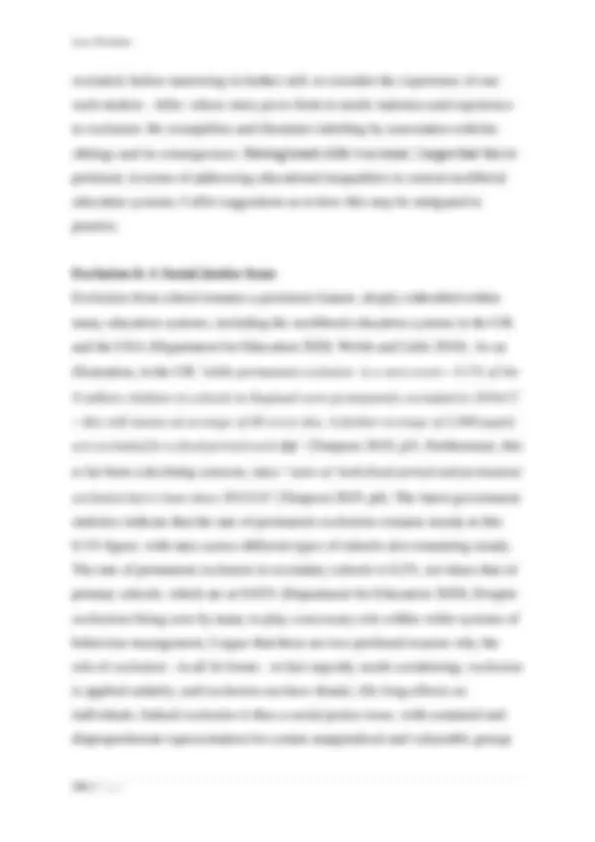
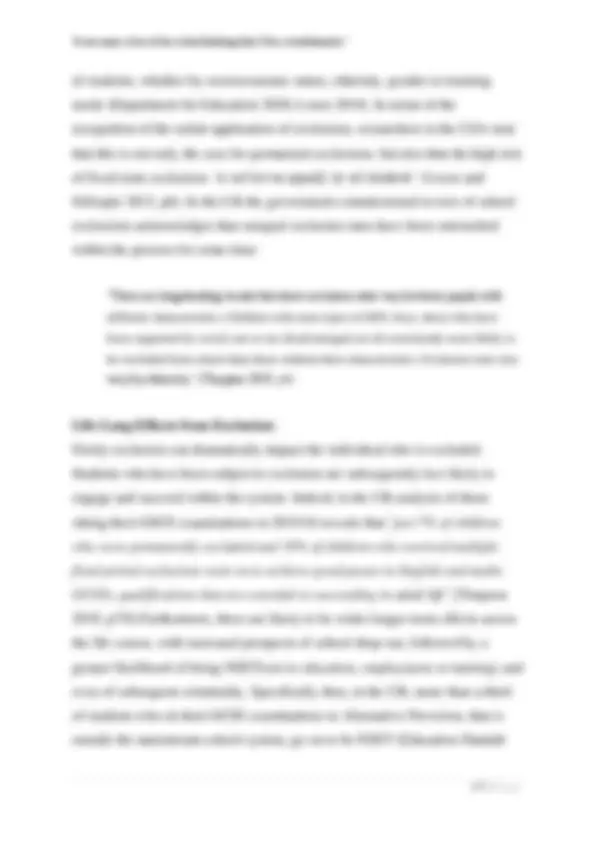
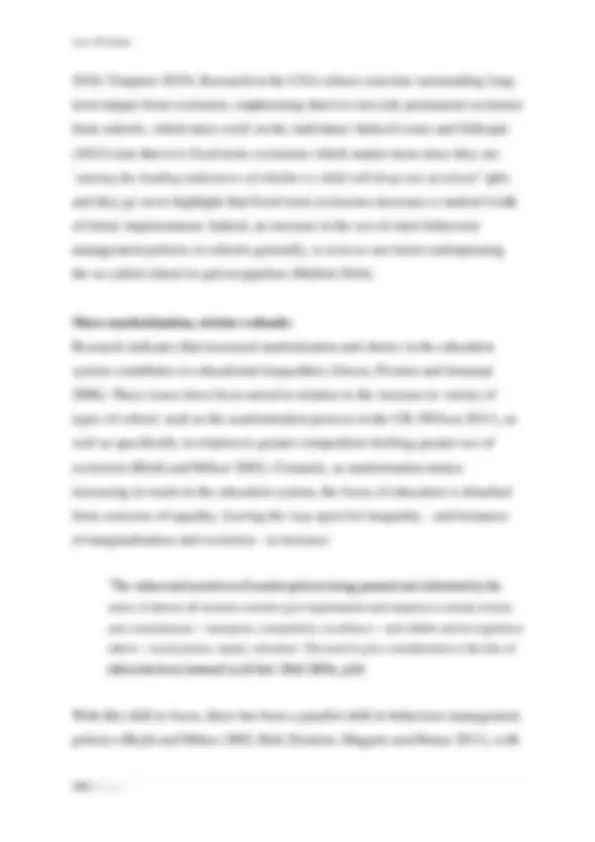
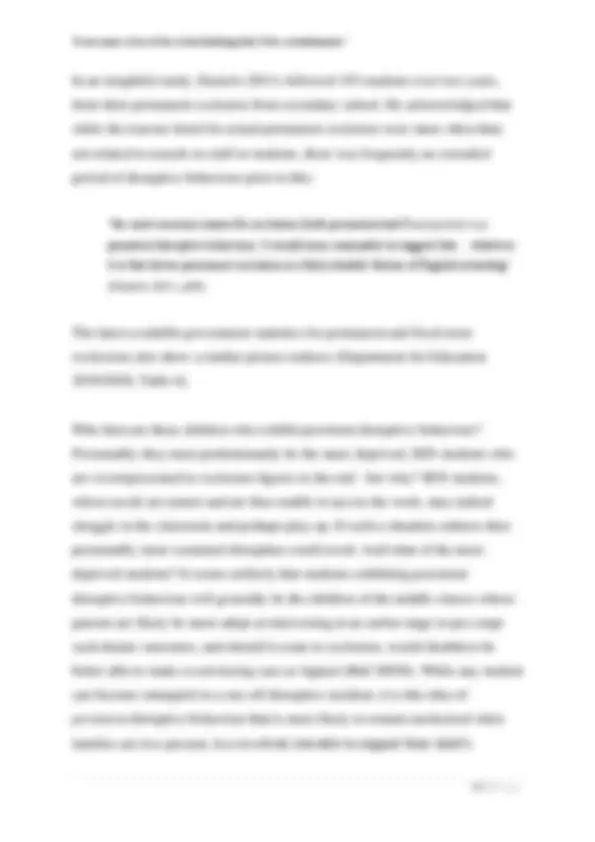
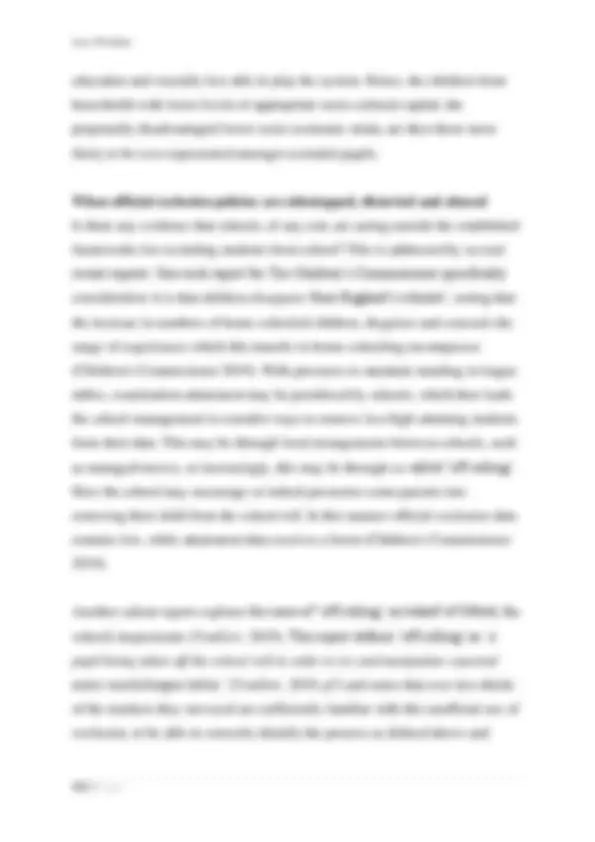
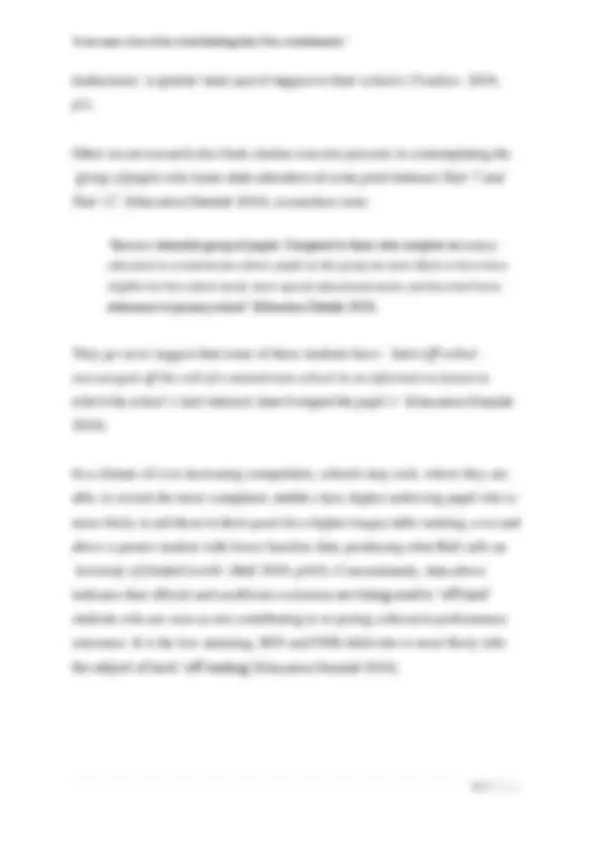
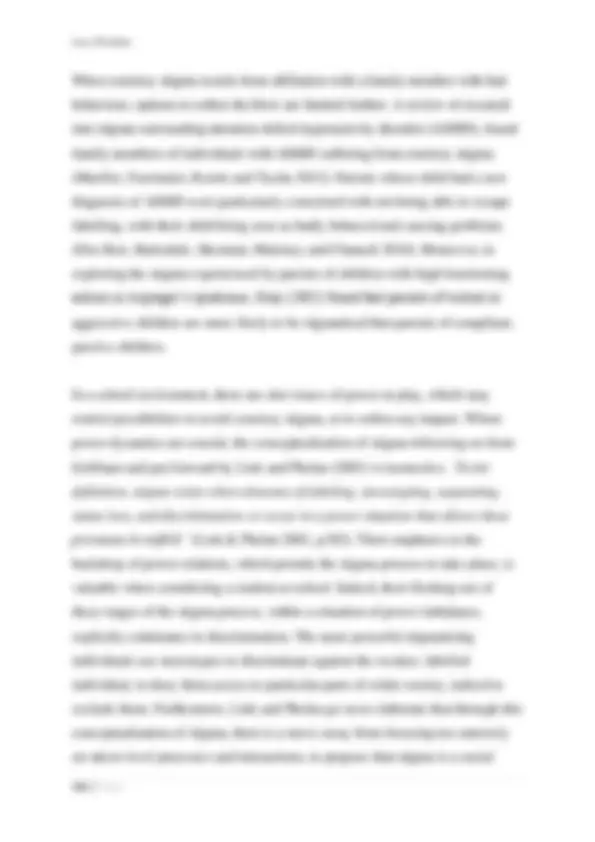
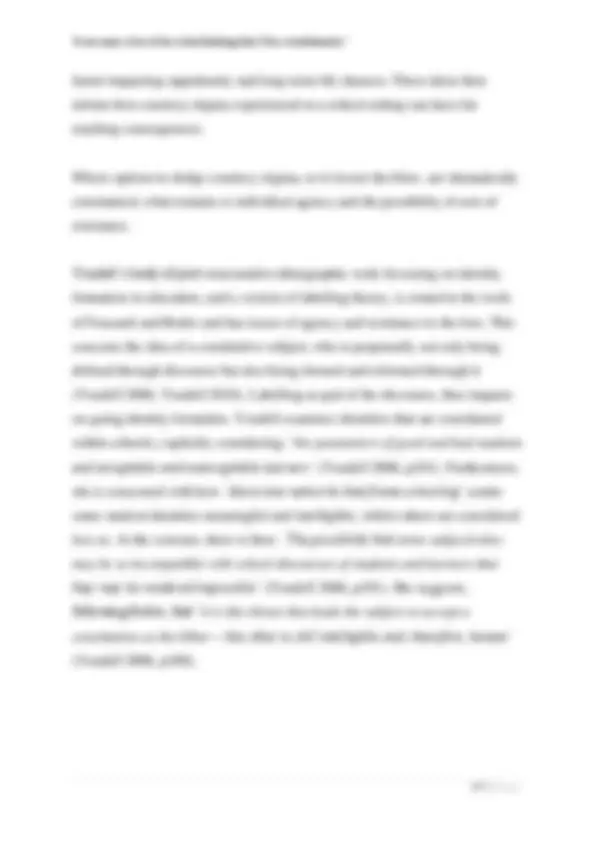
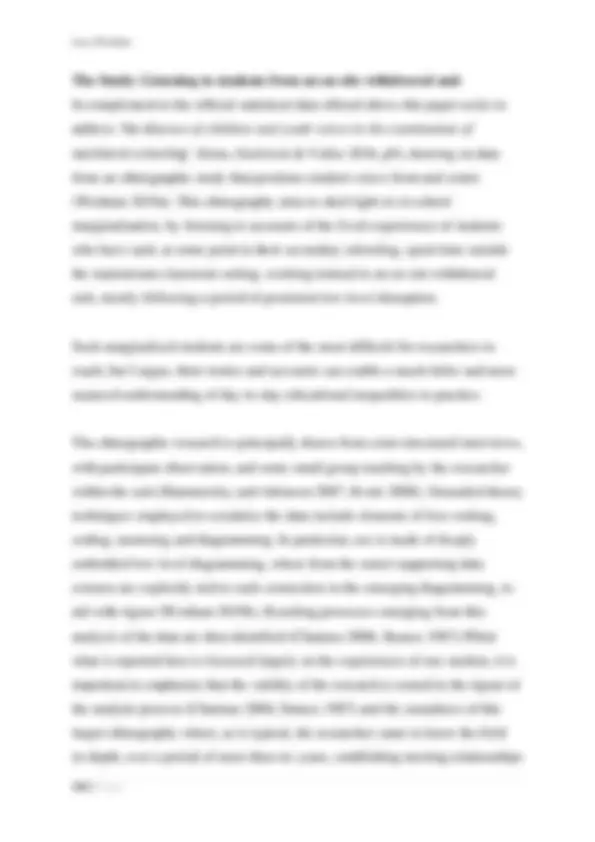
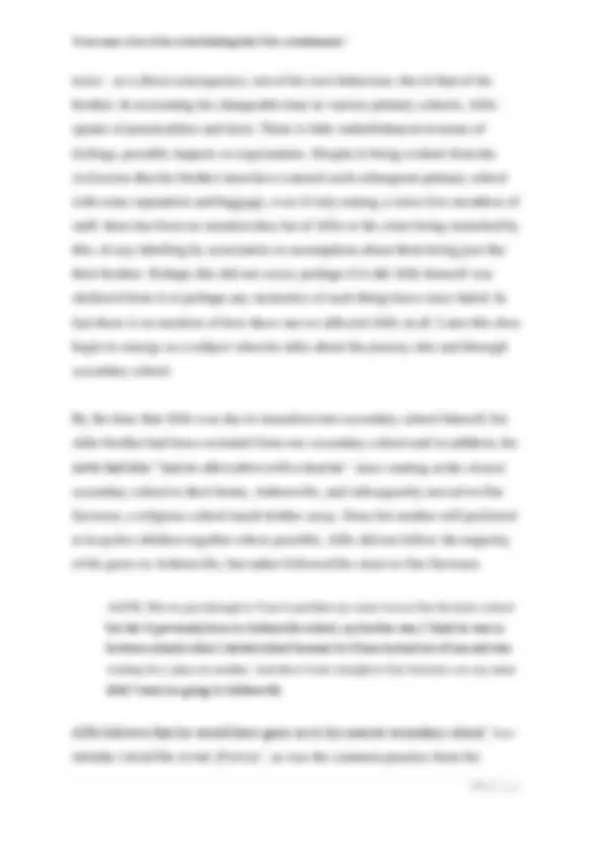
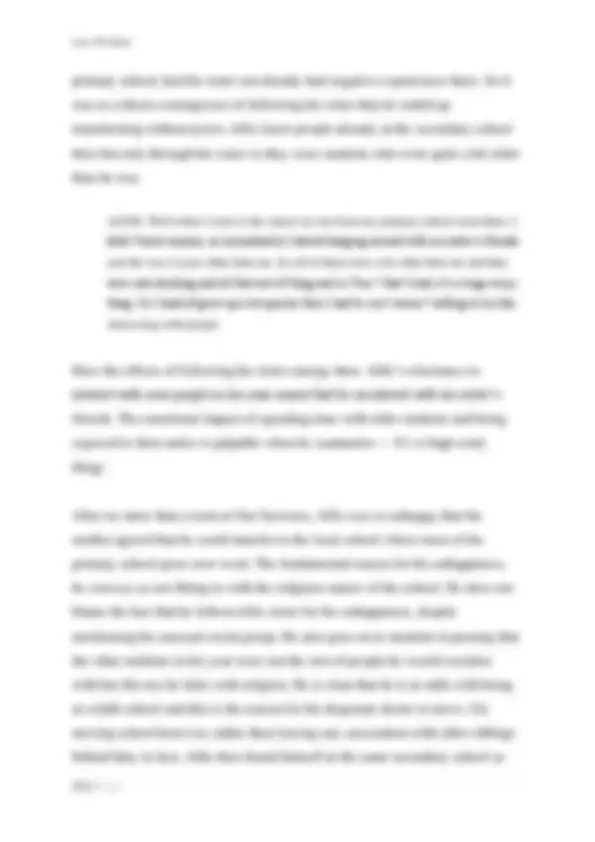
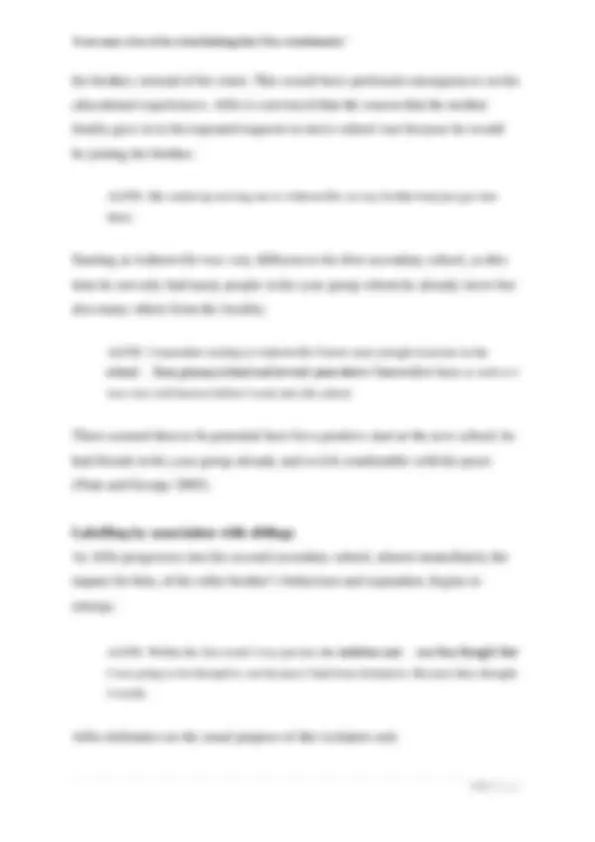
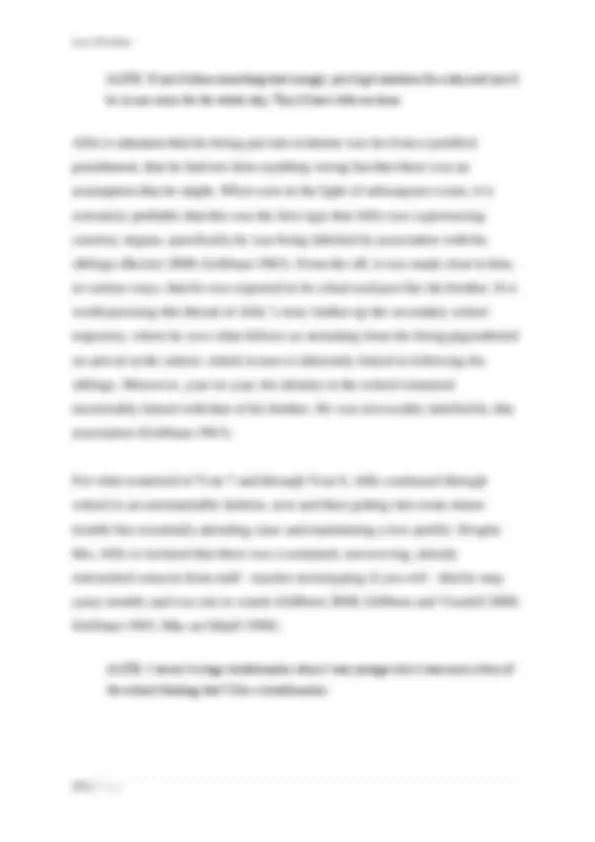
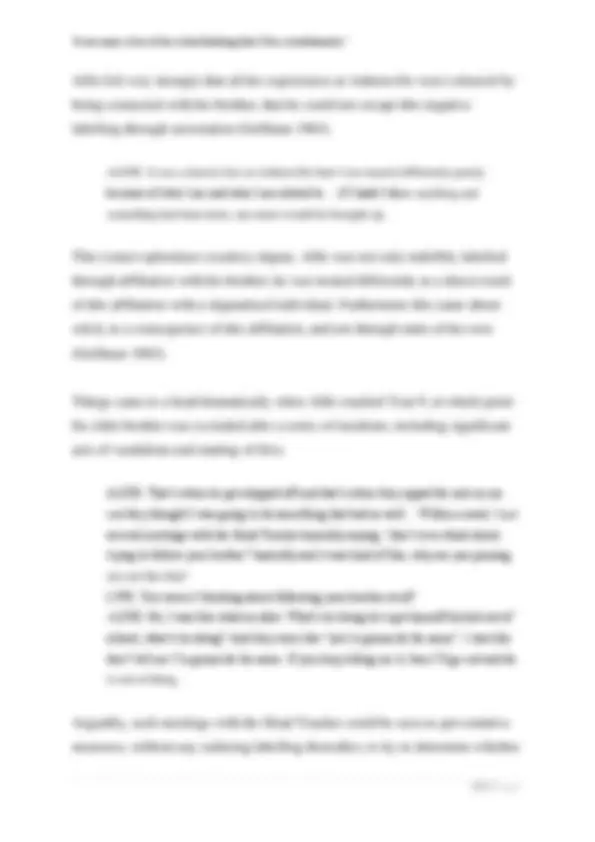
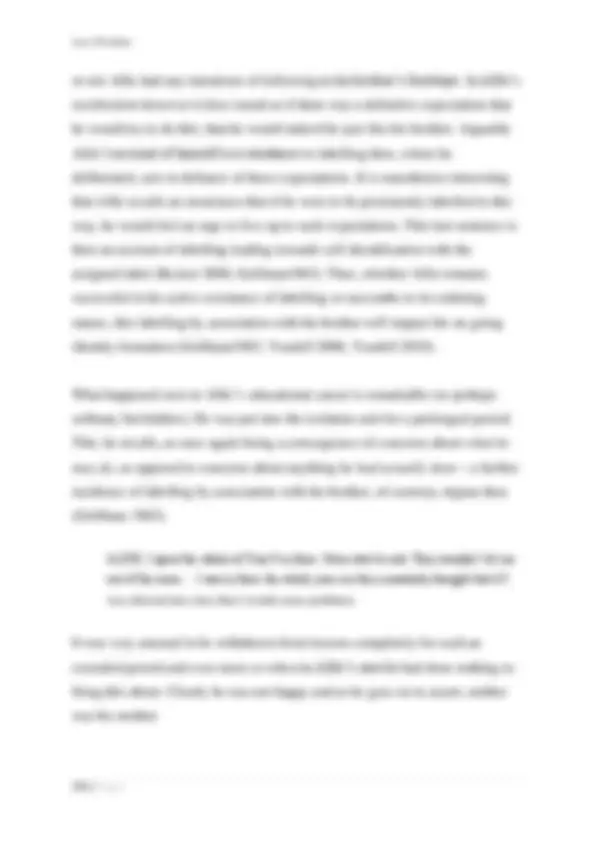
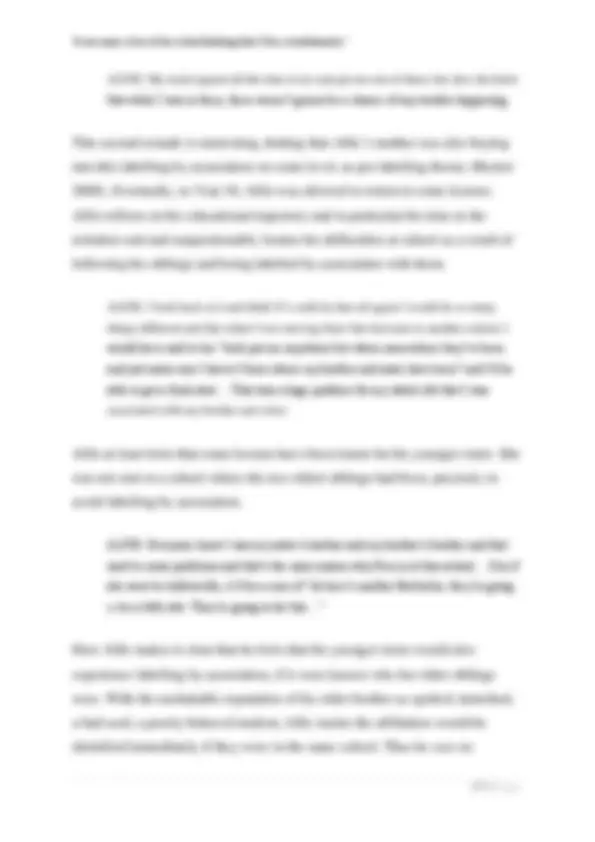
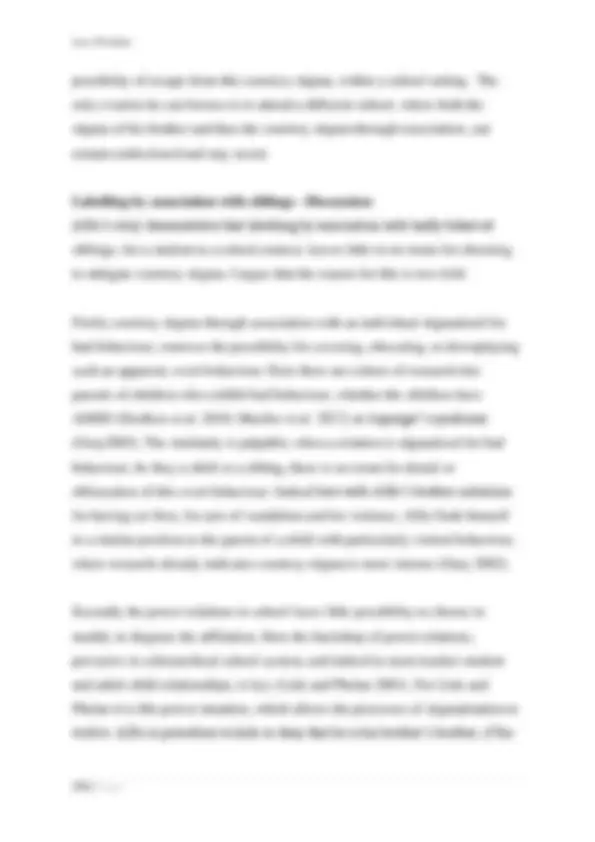
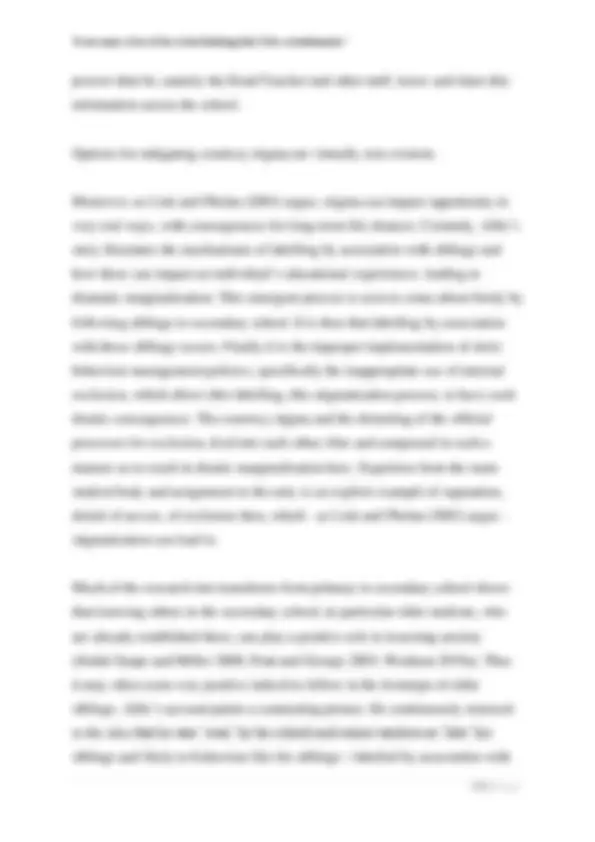
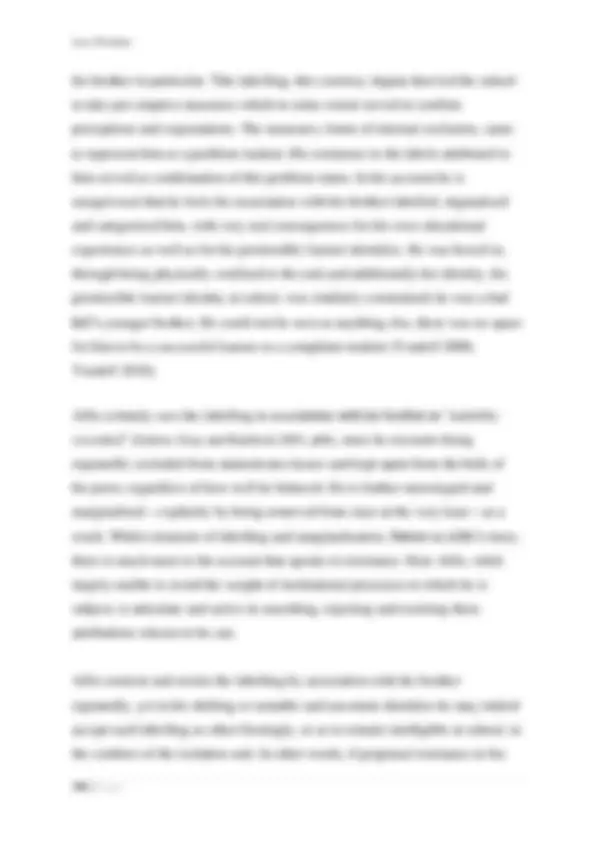
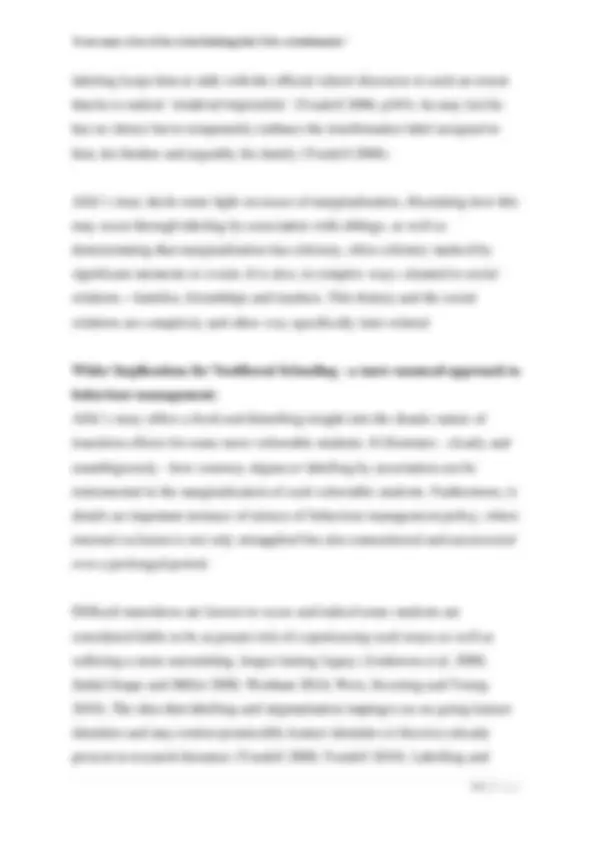
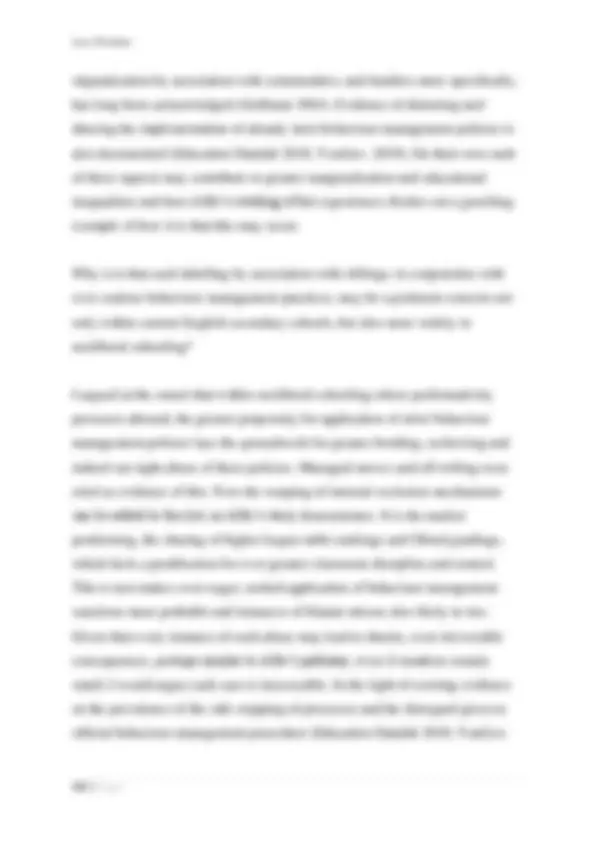
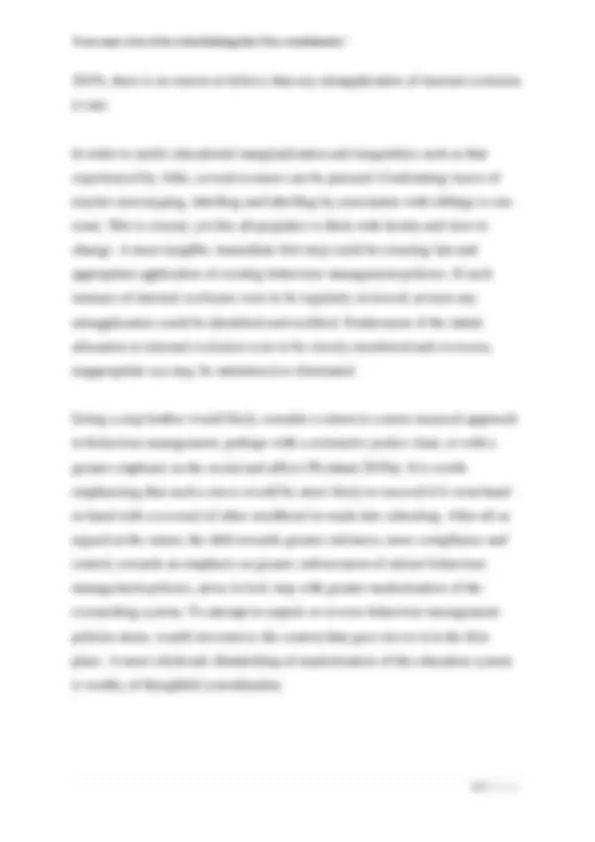
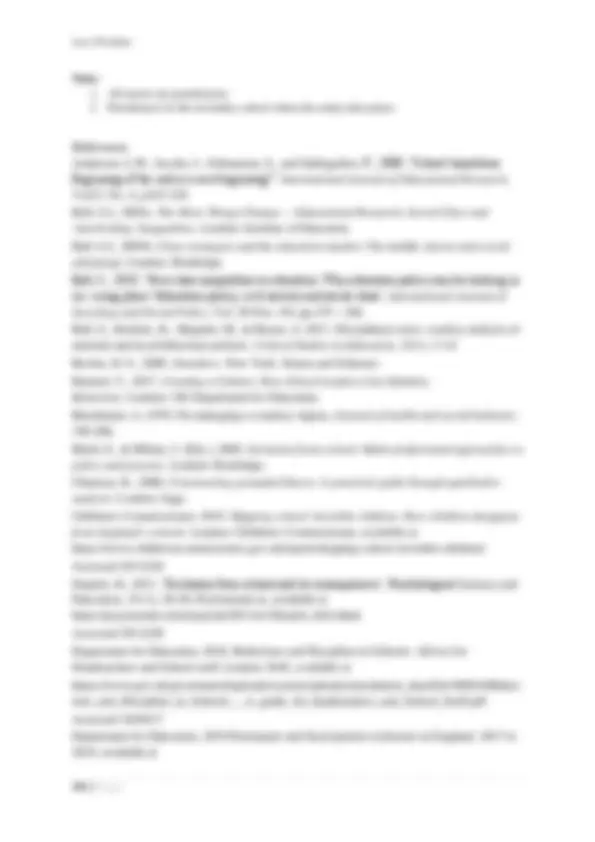
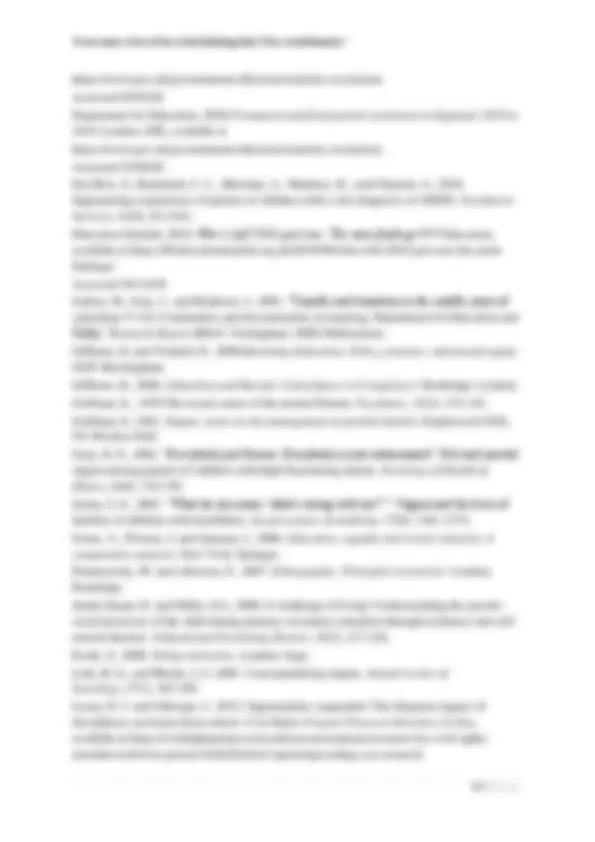
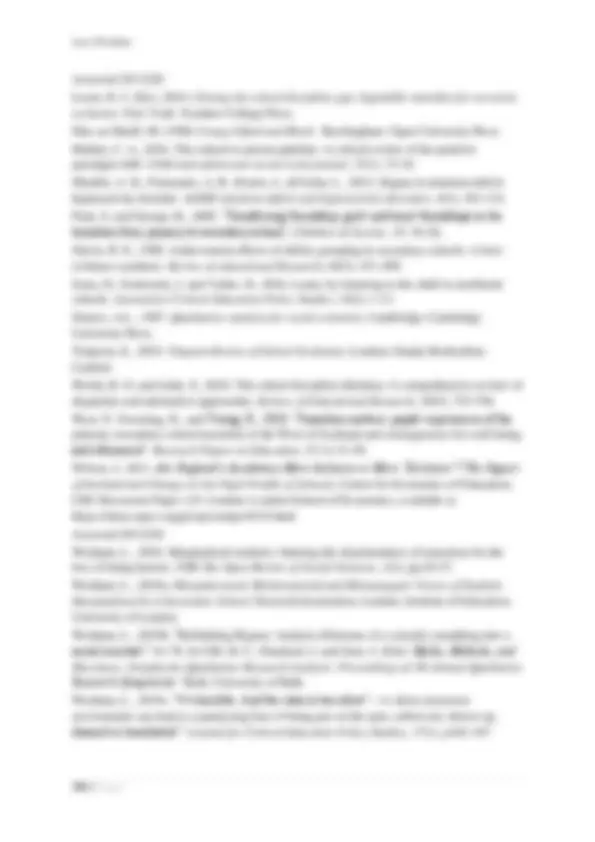



Study with the several resources on Docsity

Earn points by helping other students or get them with a premium plan


Prepare for your exams
Study with the several resources on Docsity

Earn points to download
Earn points by helping other students or get them with a premium plan
Community
Ask the community for help and clear up your study doubts
Discover the best universities in your country according to Docsity users
Free resources
Download our free guides on studying techniques, anxiety management strategies, and thesis advice from Docsity tutors
The issue of exclusion in secondary schools, focusing on the impact of strict behaviour management policies and sibling association. The author draws from an ethnography of marginalised students in a secondary school and argues that exclusion is a social justice issue, particularly affecting vulnerable groups. statistics on exclusion rates and discusses the unfair application and long-term effects of exclusion.
Typology: Schemes and Mind Maps
1 / 34

This page cannot be seen from the preview
Don't miss anything!



























‘It was more a fear of the school thinking that I’d be a troublemaker’ – Inappropriate use of internal exclusion through labelling by association with siblings Lucy Wenham University of Bristol, Bristol, England, UK Abstract Within neoliberal education systems, elements of marketisation are endemic and this brings with it the invasive pressures of performativity. Against this backdrop, discipline in schools is in many instances being more closely monitored and tightly controlled, with the implementation of strict and in some cases ‘zero-tolerance’ behaviour management policies. Can such an emphasis on compliance and control feed into greater educational inequality and marginalisation and if so through what means? This paper elucidates one possible mechanism through which the enforcement of strict behaviour management policies may fuel marginalisation - namely through inappropriate use of internal exclusions, via an example of courtesy stigma that I term ‘labelling by association with siblings.’ This emerges as part of a wider ethnographic study into marginalised students in secondary school. The student participants have each spent time outside the mainstream classroom setting, working instead in an on-site withdrawal unit. Through poignant first-hand telling of his experiences, one marginalised student exemplifies and illustrates such labelling by association with his siblings and its consequences. He is adamant that this indelible association with his brother marked him out and stigmatised him, with very real and profound consequences for his educational trajectory or ‘moral career’, as well as for his permissible learner identities. Close monitoring of internal
‘It was more a fear of the school thinking that I’d be a troublemaker’ exclusions, or reforms promoting a more nuanced approach to behaviour management - preferably in conjunction with a reversal of neoliberal in- roads into education- are needed, to mitigate the barrier to educational equality which internal exclusion though labelling by association with siblings presents. Keywords: educational inequality, courtesy stigma, labelling, learner identity, exclusion Introduction This paper focuses on an instance of marginalisation through internal exclusion; this will be referred to as ‘labelling by association with siblings.’ I argue that the current predilection for strict behaviour management policies in schools fuels, rather than diminishes, instances of exclusion - in all its forms - and that leaves the way open for misuse of such processes, including through labelling by association with siblings. In order to make the case that this labelling is not simply noteworthy but also enlightening, in terms of understanding inequalities in the present education system, I will start with a wide lens and narrow in. I begin by making the case that exclusion - in all its forms - is a social justice issue, then I consider some recent exclusions data of various kinds, starting with some permanent and fixed- term exclusion statistics and an Ofsted report. I then touch on other forms of exclusion from the classroom, such as instances of internal exclusion, managed moves, or off-rolling. Lastly, before moving to the empirical data on labelling, I examine some salient literature surrounding labelling and stigma, how labelling can impact on-going identity formation and possibilities for resisting such labelling. I draw from an ethnography into the lived-experiences of marginalised students in a secondary school, who have all been internally
‘It was more a fear of the school thinking that I’d be a troublemaker’ of students, whether by socioeconomic status, ethnicity, gender or learning needs (Department for Education 2020; Losen 2014). In terms of the recognition of the unfair application of exclusions, researchers in the USA note that this is not only the case for permanent exclusions, but also that the high risk of fixed-term exclusions ‘is not borne equally by all students’ (Losen and Gillespie 2012, p6). In the UK the government commissioned review of school exclusions acknowledges that unequal exclusion rates have been entrenched within the process for some time: ‘There are longstanding trends that show exclusion rates vary between pupils with different characteristics. Children with some types of SEN, boys, those who have been supported by social care or are disadvantaged are all consistently more likely to be excluded from school than those without these characteristics. Exclusion rates also vary by ethnicity.’ (Timpson 2019, p9) Life-Long Effects from Exclusion: Firstly exclusion can dramatically impact the individual who is excluded. Students who have been subject to exclusion are subsequently less likely to engage and succeed within the system. Indeed, in the UK analysis of those sitting their GSCE examinations in 2015/16 reveals that ‘ just 7% of children who were permanently excluded and 18% of children who received multiple fixed period exclusions went on to achieve good passes in English and maths GCSEs, qualifications that are essential to succeeding in adult life ’ (Timpson 2019, p7/8).Furthermore, there are likely to be wider longer-term effects across the life course, with increased prospects of school drop-out, followed by a greater likelihood of being NEET(not in education, employment or training) and even of subsequent criminality. Specifically then, in the UK, more than a third of students who sit their GCSE examinations in Alternative Provision, that is outside the mainstream school system, go on to be NEET (Education Datalab
Lucy Wenham 2018; Timpson 2019 ). Research in the USA echoes concerns surrounding long- term impact from exclusion, emphasising that it is not only permanent exclusion from schools, which takes a toll on the individual. Indeed Losen and Gillespie (2012) note that it is fixed-term exclusions which matter most since they are ‘ among the leading indicators of whether a child will drop out of school’ (p6), and they go on to highlight that fixed-term exclusions increases a student’s risk of future imprisonment. Indeed, an increase in the use of strict behaviour management policies in schools generally, is seen as one factor underpinning the so-called school-to-prison pipeline (Mallett 2016). More marketisation, stricter schools: Research indicates that increased marketization and choice in the education system contributes to educational inequalities (Green, Preston and Janmaat 2006). These issues have been raised in relation to the increase in variety of types of school, such as the academisation process in the UK (Wilson 2011), as well as specifically in relation to greater competition fuelling greater use of exclusion (Blyth and Milner 2002). Certainly, as marketisation makes increasing in-roads in the education system, the focus of education is detached from concerns of equality, leaving the way open for inequality - and instances of marginalisation and exclusion - to increase: ‘The values and incentives of market policies being pursued and celebrated by the states of almost all western societies give legitimation and impetus to certain actions and commitments – enterprise, competition, excellence – and inhibit and de-legitimise others – social justice, equity, tolerance. The need to give consideration to the fate of others has been lessened in all this’ (Ball 2003a, p26). With this shift in focus, there has been a parallel shift in behaviour management policies (Blyth and Milner 2002; Ball, Hoskins, Maguire and Braun 2011), with
Lucy Wenham in external exclusions, which may then arguably be expected to echo those subject to internal, on-site exclusions, since this is frequently used as a stepping-stone to the more severe punishments of external exclusions. The most recent government data includes a table also found in previous reports, recording exclusions by the deprivation level of a school. These tables indicate a sustained and clear trend that as the deprivation level of the school falls so does the proportion of the school population receiving exclusions (Department for Education 2019/2020, Table 10). This would undeniably imply that there is a possible link between deprivation and exclusion albeit at the school level. This latest set of data also considers exclusions by individual pupil characteristics, noting higher exclusion rates among free school meal (FSM) eligible pupils. This rate is remaining steady, with FSM eligible pupils being around four times more likely to receive a permanent or fixed period exclusion than those who are not eligible (Department for Education 2019/2020, Table 9). Furthermore, pupils identified as having special educational needs are also more likely - when compared to those identified as not having such needs - to receive fixed-term and permanent exclusions (Department for Education 2019/2020, Table 9). It is also interesting to observe that exclusion peaks at age 14 (Department for Education 2019/2020, Table 9). It seems then that it is the more deprived students and those with special educational needs that are disproportionately subjected to exclusions and that secondary schools in particular make use of exclusion. What is it that is leading to these exclusions and can this shed any light on why such students are overrepresented?
‘It was more a fear of the school thinking that I’d be a troublemaker’ In an insightful study, Daniels (201 1 ) followed 193 students over two years, from their permanent exclusion from secondary school. He acknowledged that while the reasons listed for actual permanent exclusion were more often than not related to assault on staff or students, there was frequently an extended period of disruptive behaviour prior to this: ‘the most common reason for exclusion (both permanent and fixed period) was persistent disruptive behaviour. It would seem reasonable to suggest that… whatever it is that drives permanent exclusion is a fairly durable feature of English schooling’ (Daniels 201 1 , p40). The latest available government statistics for permanent and fixed-term exclusions also show a similar picture endures (Department for Education 2019/ 2020 , Table 4). Who then are these children who exhibit persistent disruptive behaviour? Presumably they must predominantly be the more deprived, SEN students who are overrepresented in exclusion figures in the end - but why? SEN students, whose needs are unmet and are thus unable to access the work, may indeed struggle in the classroom and perhaps play up. If such a situation endures then presumably more sustained disruption could result. And what of the more deprived students? It seems unlikely that students exhibiting persistent disruptive behaviour will generally be the children of the middle classes whose parents are likely be more adept at intervening at an earlier stage to pre-empt such drastic outcomes, and should it come to exclusion, would doubtless be better able to make a convincing case at Appeal (Ball 2003b). While any student can become entangled in a one-off disruptive incident, it is this idea of persistent disruptive behaviour that is more likely to remain unchecked when families are less present, less involved, less able to support their child’s
‘It was more a fear of the school thinking that I’d be a troublemaker’ furthermore ‘a quarter have seen it happen in their schools’ (YouGov. 2019 , p7). Other recent research also finds similar concerns present; in contemplating the ‘group of pupils who leave state education at some point between Year 7 and Year 11’ (Education Datalab 2018), researchers note: ‘this is a vulnerable group of pupils. Compared to those who complete secondary education in a mainstream school, pupils in this group are more likely to have been eligible for free school meals, have special educational needs, and have had lower attainment at primary school’ (Education Datalab 2018). They go on to suggest that some of these students have: ‘been off-rolled - encouraged off the roll of a mainstream school in an informal exclusion in which the school’s best interests have trumped the pupil’s’ (Education Datalab 2018). In a climate of ever-increasing competition, schools may seek, where they are able, to recruit the more compliant, middle-class, higher achieving pupil who is more likely to aid them in their quest for a higher league table ranking, over and above a poorer student with lower baseline data, producing what Ball calls an ‘economy of student worth’ (Ball 2010, p163). Concomitantly, data above indicates that official and unofficial exclusions are being used to ‘off-load’ students who are seen as not contributing to or posing a threat to performance outcomes. It is the low attaining, SEN and FSM child who is most likely tobe the subject of such ‘off-loading’(Education Datalab 2018).
Lucy Wenham Labelling, identity-formation and resistance In seeking to be informed by literature on labelling theory (Becker 2008), it is teacher stereotypes and associated labelling that are central in a school setting. Teacher prejudice features within much research into issues of educational inequalities, and attainment gaps, in terms of individual categorisation by race, class or gender (Gillborn 2008; Gillborn and Youdell 2000; Mac an Ghaill 1988; Slavin 1990). Within this work, teacher bias, labelling or stereotyping is considered as one contributing factor, in terms of pupils adopting certain attitudes in school and as a result, in these students subsequent marginalisation. In terms of the constraints of labelling and feeling confined by teacher opinion: ‘Students can also feel that their image and habits are held in place by their teachers – who have files and memories in which their behaviours, and, indeed, their characters, are indelibly recorded’ (Galton, Gray and Ruddock 2003, p86). Such perceived constraints will be applicable here, yet in honing in on one individual’s story, ideas of greater relevance come from two research areas. Firstly the notion of stigma and in particular of courtesy stigma (Goffman 1963 ; Link and Phelan 2001 ) and secondly research that emphasises the impact of teacher labelling on an individual students on-going identity formation, as well as research with a clear role for individual agency in resistance (Youdell 2006; Youdell 2010). In his foundational book - Stigma: Notes on the Management of Spoiled Identity
Lucy Wenham When courtesy stigma results from affiliation with a family member with bad behaviour, options to soften the blow are limited further. A review of research into stigma surrounding attention deficit hyperactivity disorder (ADHD), found family members of individuals with ADHD suffering from courtesy stigma (Mueller, Fuermaier, Koerts and Tucha 2012). Parents whose child had a new diagnosis of ADHD were particularly concerned with not being able to escape labelling, with their child being seen as badly behaved and causing problems (Dos Reis, Barksdale, Sherman, Maloney and Charach 2010). Moreover, in exploring the stigma experienced by parents of children with high functioning autism or Asperger’s syndrome, Gray (2002) found that parents of violent or aggressive children are more likely to be stigmatised that parents of compliant, passive children. In a school environment, there are also issues of power at play, which may restrict possibilities to avoid courtesy stigma, or to soften any impact. Where power dynamics are crucial, the conceptualisation of stigma following on from Goffman and put forward by Link and Phelan (2001) is instructive. ‘In our definition, stigma exists when elements of labeling, stereotyping, separating, status loss, and discrimination co-occur in a power situation that allows these processes to unfold.’ (Link & Phelan 2001, p382). Their emphasis on the backdrop of power relations, which permits the stigma process to take place, is valuable when considering a student at school. Indeed, their fleshing out of these stages of the stigma process, within a situation of power imbalance, explicitly culminates in discrimination. The more powerful stigmatising individuals use stereotypes to discriminate against the weaker, labelled individual, to deny them access to particular parts of wider society, indeed to exclude them. Furthermore, Link and Phelan go on to elaborate that through this conceptualisation of stigma, there is a move away from focusing too narrowly on micro-level processes and interactions, to propose that stigma is a social
‘It was more a fear of the school thinking that I’d be a troublemaker’ factor impacting opportunity and long-term life chances. These ideas then inform how courtesy stigma experienced in a school setting can have far reaching consequences. Where options to dodge courtesy stigma, or to lessen the blow, are dramatically constrained, what remains is individual agency and the possibility of acts of resistance. Youdell’s body of post-structuralist ethnographic work focussing on identity formation in education, and a version of labelling theory, is rooted in the work of Foucault and Butler and has issues of agency and resistance to the fore. This concerns the idea of a constitutive subject, who is perpetually not only being defined through discourse but also being formed and reformed through it (Youdell 2006; Youdell 2010). Labelling as part of the discourse, thus impacts on-going identity formation. Youdell examines identities that are constituted within schools, explicitly considering: ‘ the parameters of good and bad students and acceptable and unacceptable learners’ (Youdell 2006, p101). Furthermore, she is concerned with how ‘discursive networks that frame schooling’ render some student identities meaningful and intelligible, whilst others are considered less so. At the extreme, there is then: ‘The possibility that some subjectivities may be so incompatible with school discourses of students and learners that they may be rendered impossible’ (Youdell 2006, p101). She suggests, following Butler, that ‘ it is this threat that leads the subject to accept a constitution as the Other – this other is still intelligible and, therefore, human’ (Youdell 2006, p100).
‘It was more a fear of the school thinking that I’d be a troublemaker’ with staff and students, substantiating student interview data through this wider understanding of the individuals and their experiences within this setting (Hammersley and Atkinson 2007). In what follows, I focus on a single astringent code identified in the process of analysis - the inappropriate use of internal exclusion through labelling by association with siblings. Examining the data When the student participants in the ethnographic study were invited to talk about their experiences of school, labelling by association with siblings emerges in relation to transition from primary to secondary school - specifically then in terms of following an older sibling into secondary school. One student - Alfie - is adamant in his account of being internally excluded that ‘labelling by association with siblings’ was instrumental in his immediate, persistent and severe marginalisation. This emergent process is situated at the nexus of three potential sources of marginalisation - one relating to the over- zealous and inappropriate implementation of strict behaviour management policies, another concerning long-term impacts from a difficult transition (Anderson, Jacobs, Schraumm, and Splittgerber2000; Jindal-Snape and Miller 2008; Wenham 2016; West, Sweeting and Young 2010) and the third pertaining to the impacts of courtesy stigma and labelling per se (Goffman 1963). Alfie’s Story Let us focus on Alfie. He has a story rife with labelling by association with his older siblings and his brother in particular, as he followed them from school to school. This has had a profound effect on his educational trajectory in many ways. Indeed, his story illustrates the multifaceted, tangled and intricate nature
Lucy Wenham of this trajectory; the complex ‘package’ of his experience and reaction that makes up what may be better termed his ‘moral career’ (Goffman 1959). Alfie has a sister who is several years older and a brother in the academic year above him. When they were young and all still in primary school, the three siblings went to the same schools. Alfie makes explicit one way in which siblings all being at the same school makes things easier. ALFIE: So we all like went together, like purely coz mum would have to get us to school. She can’t physically get us to two different schools. This is a common sense justification for wanting to keep siblings together at the same school, for the practicality and ease of transportation, whether this is older siblings escorting the younger ones to and from school safely or parents on a school run. For Alfie’s mum, this would make taking her children to and from school easier. Alfie’s brother had been excluded from two primary schools and each time he was ‘kicked out’ this meant all three of them starting afresh at a different school. Thus for Alfie these issues frame not just his transition from primary to secondary but additionally his transfer between different primary schools and different secondary schools. ALFIE: When I was in Year 3 we got moved to another school coz he basically got kicked out of primary school… First day of my second primary school my brother knocked a kid out so we immediately went to a third one… In the third one he seemed to settle down and we all seemed to like get on with it. As early as Year 3 then, Alfie’s education is tangibly impacted by the actions of his older brother. Alfie was taken out of one school and moved to another –
Lucy Wenham primary school, had his sister not already had negative experiences there. So it was as a direct consequence of following his sister that he ended up transitioning without peers; Alfie knew people already at the secondary school then but only through his sister so they were students who were quite a bit older than he was. ALFIE: Well when I went to the school no one from my primary school went there. I didn’t know anyone, so immediately I started hanging around with my sister’s friends and she was 4 years older than me. So all of them were a lot older than me and they were into drinking and all that sort of thing and in Year 7 that’s bad, it’s a huge scary thing. So I kind of grew up a lot quicker than I had to coz I weren’t willing to try like interacting with people. Here the effects of following his sister emerge then. Alfie’s reluctance to interact with new people in his year meant that he socialised with his sister’s friends. The emotional impact of spending time with older students and being exposed to their antics is palpable when he summaries – ‘it’s a huge scary thing’. After no more than a term at Our Saviours, Alfie was so unhappy that his mother agreed that he could transfer to the local school where most of his primary school peers now went. The fundamental reason for his unhappiness, he conveys as not fitting in with the religious nature of the school. He does not blame the fact that he followed his sister for his unhappiness, despite mentioning his unusual social group. He also goes on to mention in passing that the other students in his year were not the sort of people he would socialise with but this too he links with religion. He is clear that he is at odds with being at a faith school and this is the reason for his desperate desire to move. On moving school however, rather than leaving any association with older siblings behind him, in fact, Alfie then found himself at the same secondary school as
‘It was more a fear of the school thinking that I’d be a troublemaker’ his brother, instead of his sister. This would have profound consequences on his educational experiences. Alfie is convinced that the reason that his mother finally gave in to his repeated requests to move school was because he would be joining his brother. ALFIE: She ended up moving me to Ashtonville coz my brother had just got into there. Starting at Ashtonville was very different to his first secondary school, as this time he not only had many people in his year group whom he already knew but also many others from the locality. ALFIE: I remember starting at Ashtonville I knew near enough everyone in the school… from primary school and several years above I knew all of them as well so I was very well known before I went into the school. There seemed then to be potential here for a positive start at the new school, he had friends in his year group already and so felt comfortable with his peers (Pratt and George 2005). Labelling by association with siblings As Alfie progresses into his second secondary school, almost immediately the impact for him, of his older brother’s behaviour and reputation, begins to emerge. ALFIE: Within the first week I was put into the isolation unit… coz they thought that I was going to be disruptive, not because I had been disruptive. Because they thought I would. Alfie elaborates on the usual purpose of this isolation unit.